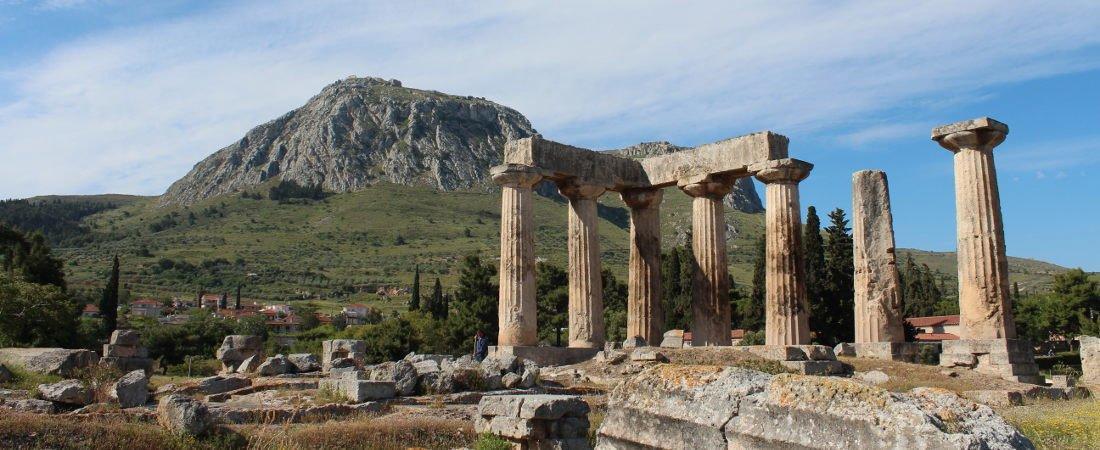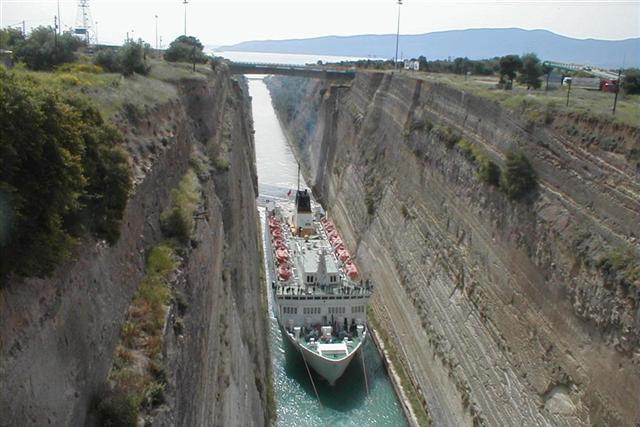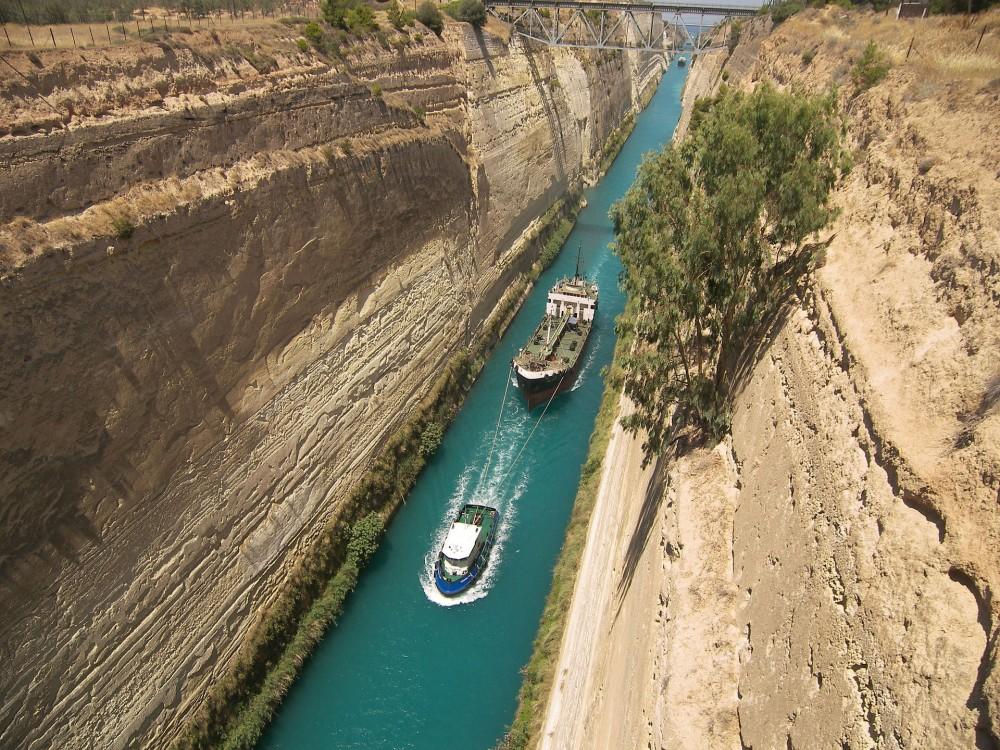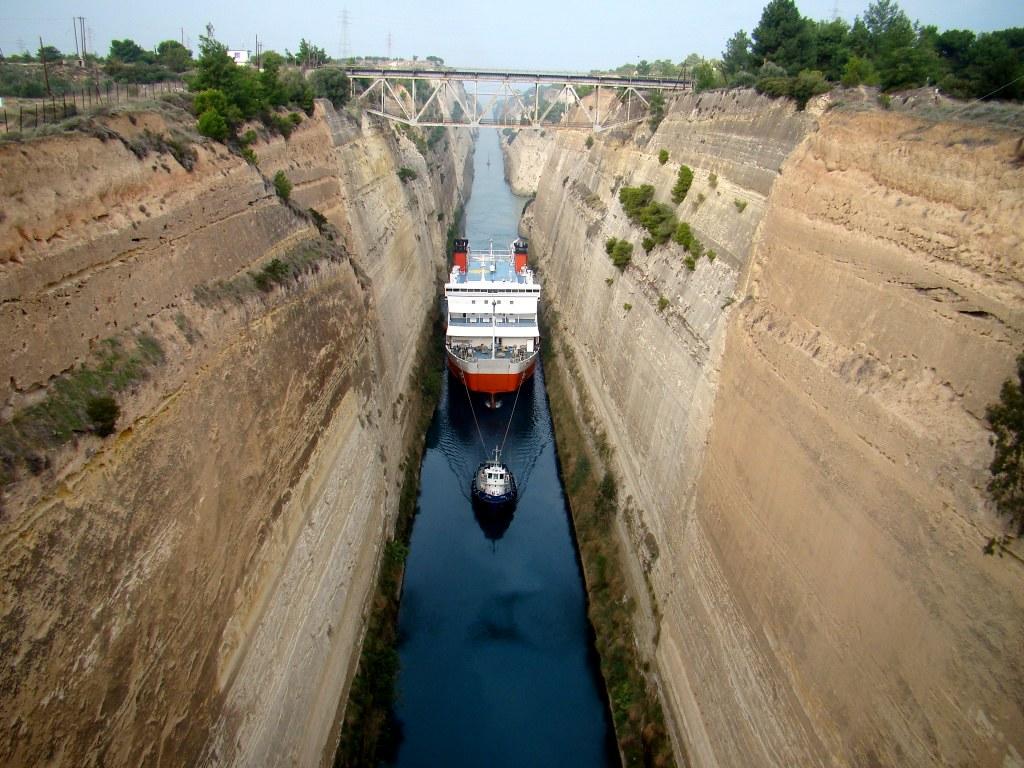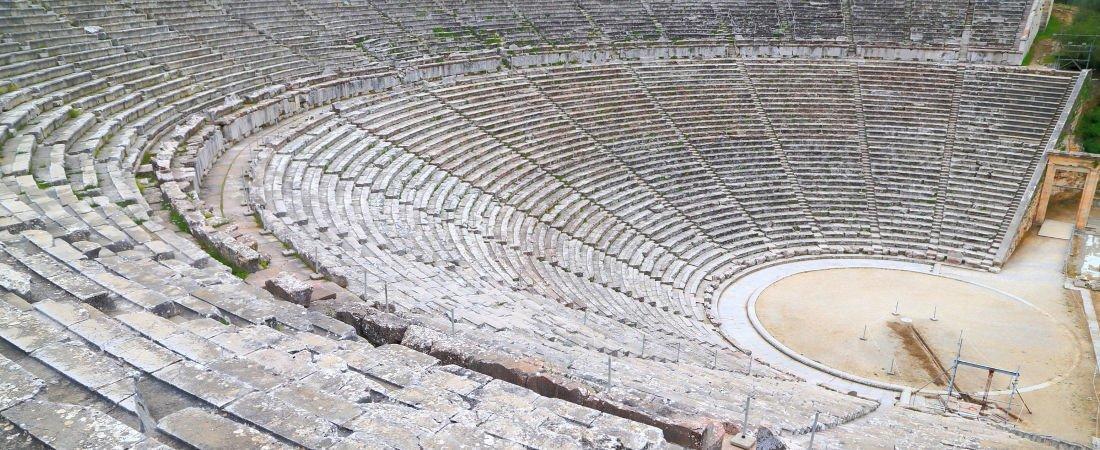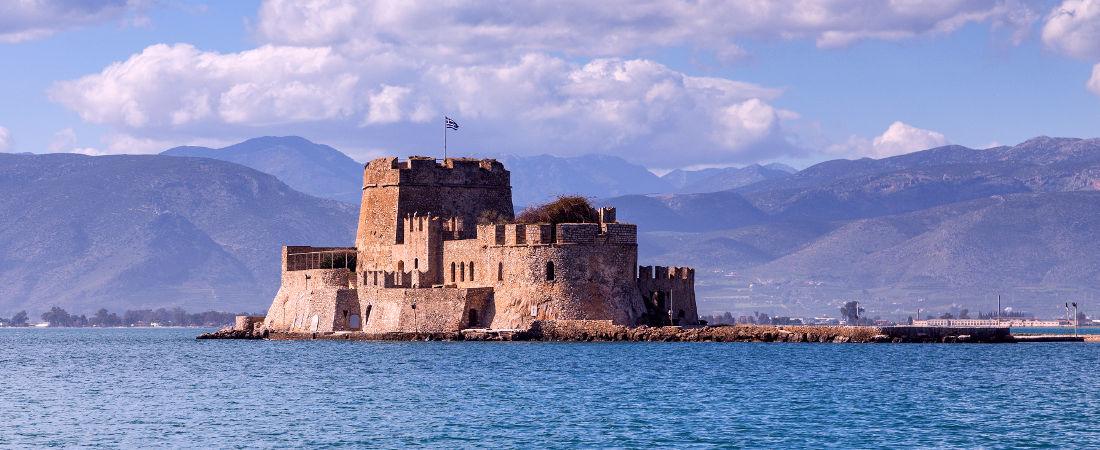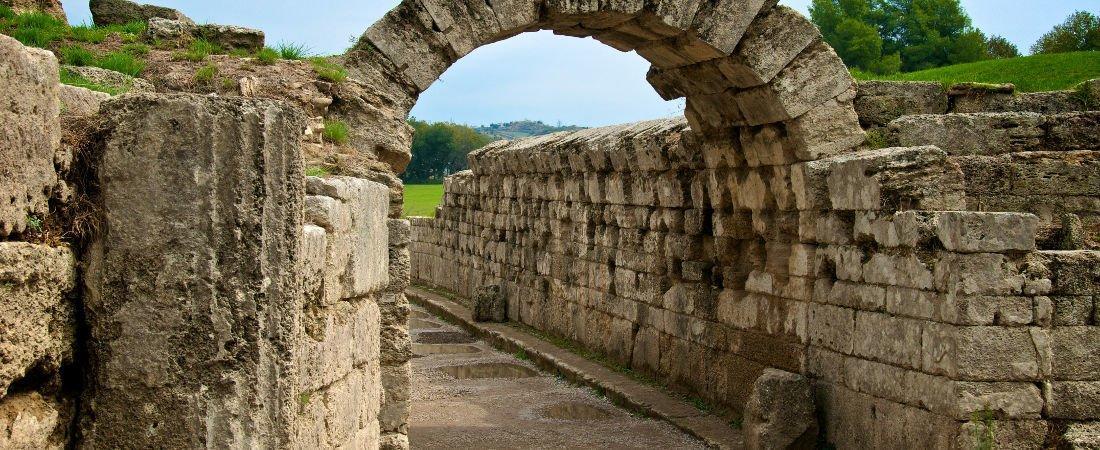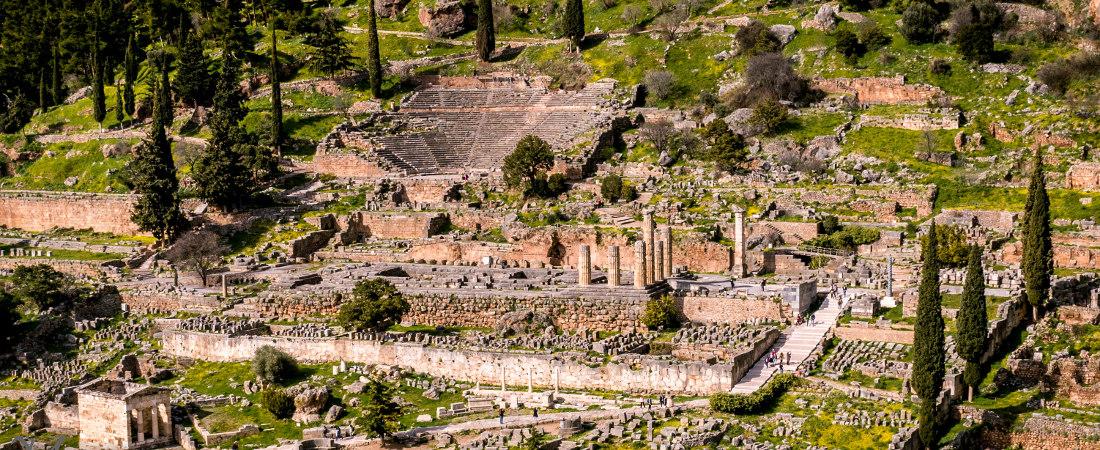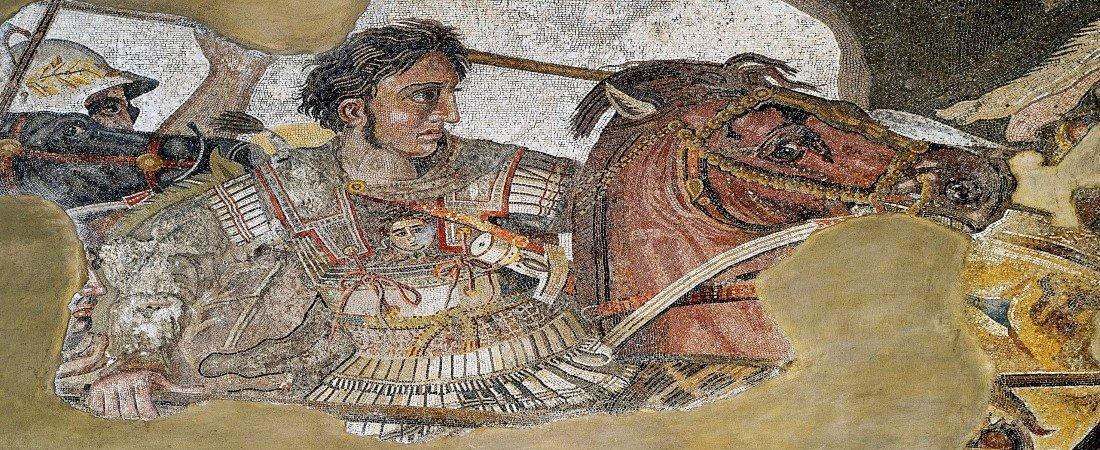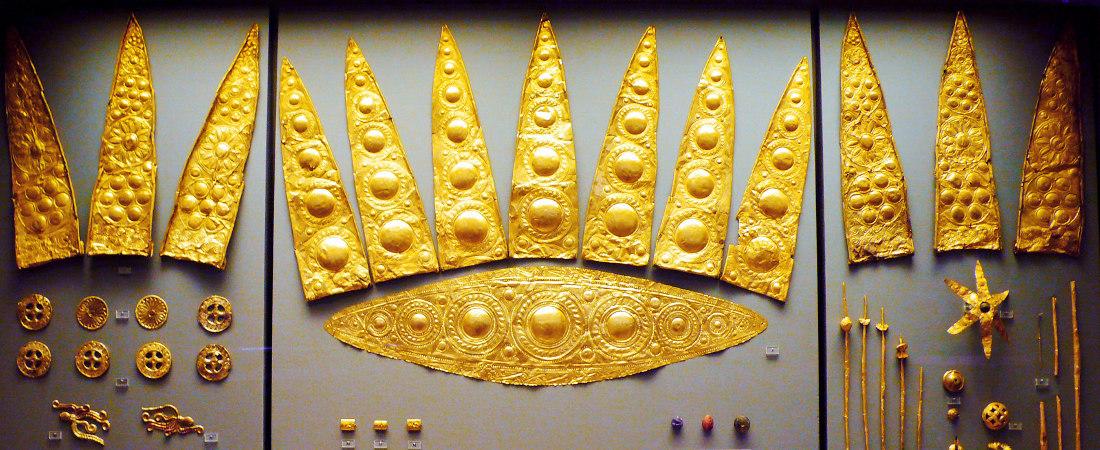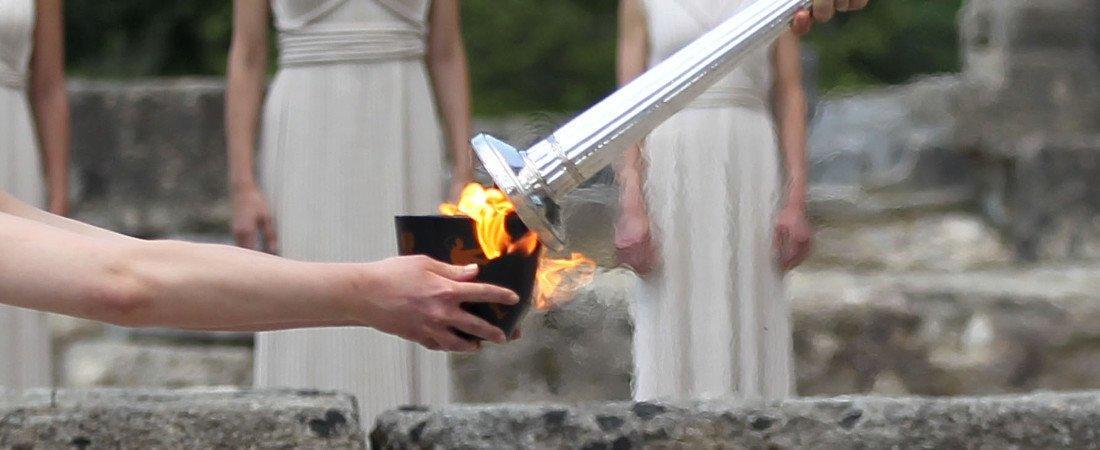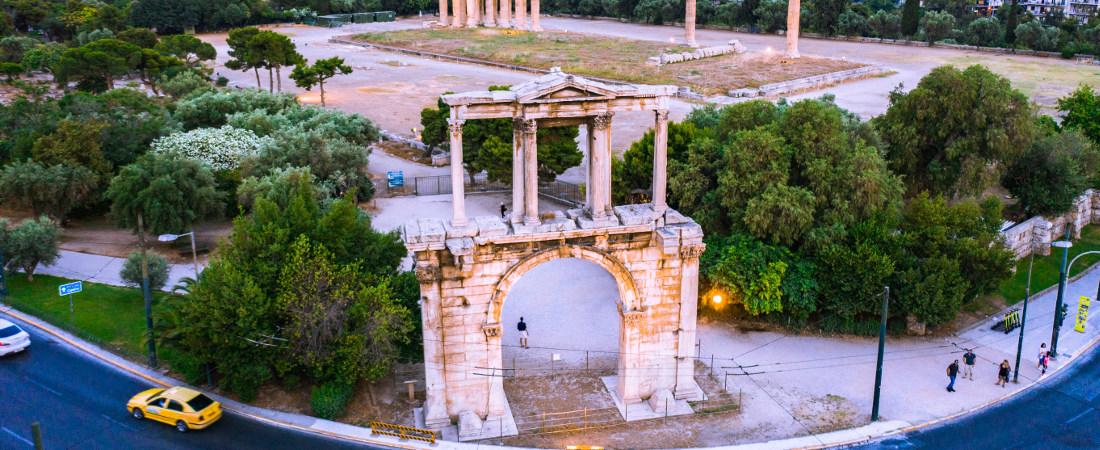The Corinth Canal
The Corinth Canal is a canal that connects the Gulf of Corinth with the Saronic Gulf in the Aegean Sea. It cuts through the narrow Isthmus of Corinth and separates the Peloponnesian peninsula from the Greek mainland, thus effectively making the former an island. Its length is 6.3 kilometers (3.9 miles). Furthermore, it was built between 1881 and 1893.
Birth of a dream
The Corinth Canal was an idea and dream that dates back over 2000 years. The strip of land that connects the Peloponnese and mainland Greece is called the “Isthmus”. Its narrowest point is only 4 miles wide. Moreover, in ancient times, one could see from one side to the other.
The Ancient Greeks devised a solution to the problem of the extra length of the ships’ journey when they constructed the “Diolkos” . This was a stoned path, paved with limestone, which ran along from Schinous on the Saronic Gulf to Poseidonia on the Corinth Gulf. The name “Diolkos” means a “movable platform”.
First steps
The Tyrant of Corinth, Periander, was the first who envisioned the Corinth Canal in 602 BC. Unfortunately, the technical capabilities of ancient times made his idea impossible to carry out. Instead, he developed the “Diolkos”, which more than served its purpose. Along the “Diolkos” ran the “olkos”, which was a wheeled vehicle onto which ships were lifted onto, and taken over land from one side to the other.
Not all ships could use the “diolkos” due to their size, but in many cases, the cargo of ships was taken off at one side, and transported to the other, where a second ship would be waiting to load on the cargo. Today, there are still sections of the “diolkos” that one can still see.
Continuators
Many others intended to start the construction of the Corinth Canal, but for several varied reasons, the project never took off. Demetrius Poliorkitis, King of Macedon tried in 300 BC, but with no positive results. Amongst the reasons stopping him was the belief that Poseidon, God of the Sea, opposed the joining of the Aegean Sea and the Adriatic Sea.
This was also a fear that stopped Julius Caesar and Emperors Caligula and Hadrian from starting construction of the canal.
The first serious attempt at the construction of the canal was by Emperor Nero, who, in 67 AD, announced to spectators at the Isthmian Games that he was going to dig the canal that would “connect the two seas”. Nero dug the first piece of land out himself, using a golden pick, and carried this first basket of earth and turf on his own back. However, even though Nero had approximately 6000 slaves who would work on the canal, again, the plan never materialized, for several reasons, including financial ones.
Completion
The idea for the canal was incomplete until its revival again during the late 1800’s. After several false starts, the Corinth Canal was finally completed, and put into use, on October 28th, 1893. A combination of French and Greek workmen carried out the work on the canal.
The Corinth Canal was based on the “Panama and Suez Canals”. It is often referred to as their “step-child”.
The Corinth Canal is a great technical achievement for its time. It saves the 700-kilometers (430 mi) journey around the Peloponnese for smaller ships, but since it is only 24 meters (79 ft) wide it is too narrow for modern ocean freighters. The canal is nowadays mostly used by tourist ships; 11,000 ships per year travel through the waterway. The water in the canal is 8 meters (26 ft) deep. At the maximum, the walls are 52 meters high. At each end of the canal, seashore roads cross using submersible bridges that are lowered to the canal bottom to allow maritime traffic to pass.
Tours We Recommend
See the Corinth Canal with one of our tours:
Ancient Corinth Morning Tour From Athens
7 Day Tour In Greece Through the Centuries
5 Day Tour To Epidaurus, Nauplion, Mycenae, Olympia, Delphi and Meteora Monasteries
8 Day Combined Tour Package to the Islands and Historical Sites of Greece
4 Day Tour To Epidaurus, Mycenae, Nauplion, Olympia, Delphi and Meteora Monasteries








